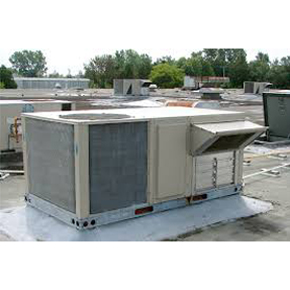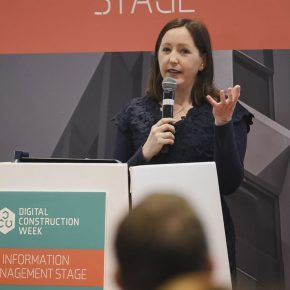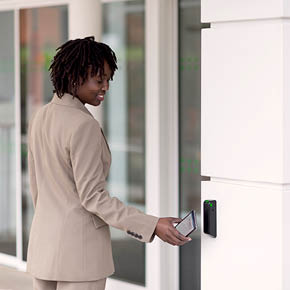
Does the cold weather affect my climate control unit?
Winter is approaching and buildings are going from needing to be cooled to needing to be heated to maintain an optimal environment for the occupants.
How the cold weather affects your system will depend on what system you have.
What do we mean by climate control?
If you feel cold you will turn the heating on. If you feel hot you will turn it off again and maybe turn on a fan or open a window to bring in cooler air. Climate control is simply the automation of this procedure to provide an optimal indoor atmosphere.
In a house climate control will probably be limited to turning the central heating on or off but in a large building heating and air conditioning systems will be combined, possibly with automated window openers and certainly with fans to provide the correct amount of ventilation.
Home systems are becoming increasingly complex as the cost of wireless radiator thermostats; room thermostats and integrated control units are dropping.
What are the parts of the system?
Control unit: The control unit is the brains behind everything. They vary in complexity from a home system with only a few wireless sensor units controlling the boiler to fully integrated HVAC systems where a network of sensors located around the building measures temperature and humidity.
More sophisticated systems can be integrated with security systems to determine the occupancy of the building and with weather reports to predict what will be required in the near future.
Heating: The two main ways in which heating can be provided are through warm water or warm air being moved around the building.
Warm water heating uses a boiler or heat exchanger to heat the water then a pump to distributed the heated water and return cold water to be heated. A heat exchanger can be linked to a solar or ground pump system or can be linked to the cooling system if the building has zones that need to be heated and cooled independently.
Warm air systems work on a similar principle. Instead a pump fans, or the natural tendency of warm air to rise, are used to move the air around.
Cooling systems: Air cooling systems work by drawing warm air over pipes filled with refrigerant, which causes the refrigerant to heat up. This is then pumped through a heat exchanger and cooled with the waste heat being transferred outside, usually by blowing it out as warm air.
The efficiency of a cooling system can be severely limited if the air cooling coil and heat exchanger coils are too close together. For these reason systems can be split or single unit.
A single unit system would typically be installed to cool one room. Some can replace a pane of glass in a window (a window system) whilst others use a length of ducting to exhaust warm air.
A split unit system might only cool one room, with the cooling coil inside and the heat exchanger outside on the wall, or might be installed on a larger scale to cool an entire building. Ducting and fans move the air around the system and the amount of ducting required means they are usually fitted when the building is constructed.
Ventilation: A house is ventilated by opening windows but in a large building, ventilation is provided as part of the air movement system by a network of fans. It may also be provided by automated window openers that the control unit can use to open windows.
Ventilation allows fresh air to enter the building and to balance the humidity, however it will also allow heat energy to escape, which may not be what you want in winter.
Filters: If the system is moving air around there will need to be filters in place to catch airborne pollutants and dust. These need cleaning or changing regularly. There may well be a variety of different filters for microbial protection, pollen and larger contaminants such as animal hair or they may be combined into a single filter cartridge.
What are the differences between summer and winter operation?
The main difference between summer and winter that affects climate control operation is the temperature. In July and August the average maximum temperature is slightly under 20C, whilst in January and February that figure drops to 6.5C.
The extremes of temperature also vary. In August it is not unknown for the temperature to climb over 30C whilst overnight in January we can expect there might be frost. In the summer therefore, the main priority of the climate control system will be to cool the air whilst in the winter the main priority will be to warm it. Some systems are able to reverse the airflow to provide heating from the same units that provide cooling.
The other factor affecting climate control is humidity. Warm air holds more moisture than cold air. Warm air hitting a cold surface, such as a window, will then lose the moisture it cannot hold. This process will also take place in the air cooling unit when the air is cooled. Additionally on wet, rainy days people may bring heavily soaked clothing into the building and locally increase the humidity as the clothing dries.
The type of airborne pollutants that the filters need to deal with will also vary. In the summer the air may have a high pollen load. Pollen filters will need to be cleaned or changed regularly, however in the winter it is anti-microbial filters that will be more important as the combination of colder weather and people spending more time indoors means that the air is likely to contain viruses and bacteria which this type of filter is designed to extract.
Winterisation: Some systems will need specific winter protection. For example, evaporative cooling systems will need to be drained down if freezing temperatures threaten. The company supplying the equipment should have advised on any necessary procedures and, if they have a maintenance contract, should prepare the equipment correctly.
Latest news

8th April 2025
First look at industry speakers for GEO Business 2025
GEO Business, the UK’s premier geospatial event, is set to return to ExCeL London on 4 – 5 June 2025, bringing together the brightest minds in the industry.
Posted in Articles, Building Industry Events, Building Industry News, Building Products & Structures, Building Services, Exhibitions and Conferences, Information Technology, Innovations & New Products, Restoration & Refurbishment, Retrofit & Renovation, Seminars
8th April 2025
Digital Construction Week 2025 announces first wave of industry-leading speakers
Digital Construction Week (DCW), the UK’s premier event for digital innovation in the built environment, is set to return to ExCeL London on 4 – 5 June 2025.
Posted in Articles, BIM, Infrastructure & CAD Software, Building Industry Events, Building Industry News, Building Products & Structures, Building Services, Building Systems, Civil Engineering, Exhibitions and Conferences, Hard Landscaping & Walkways, Health & Safety, Information Technology, Innovations & New Products, Landscaping, Retrofit & Renovation, Seminars
7th April 2025
Abloy UK provides bespoke access control solution for CPA Group’s Lanarkshire HQ
Abloy UK has supplied CPA Group with its PROTEC2 CLIQ solution to streamline access control and protect assets at its headquarters in Shotts, Lanarkshire.
Posted in Access Control & Door Entry Systems, Architectural Ironmongery, Articles, Building Industry News, Building Products & Structures, Building Services, Case Studies, Doors, Facility Management & Building Services, Health & Safety, Restoration & Refurbishment, Retrofit & Renovation, Security and Fire Protection
7th April 2025
ASSA ABLOY EMEIA: A new generation of reader is added to the Aperio digital access family
There is now a way to control access digitally, effectively and wire-free, thanks to ASSA ABLOY EMEIA…
Posted in Access Control & Door Entry Systems, Architectural Ironmongery, Articles, Building Industry News, Building Products & Structures, Building Services, Doors, Facility Management & Building Services, Health & Safety, Information Technology, Innovations & New Products, Posts, Retrofit & Renovation, Security and Fire Protection
 Sign up:
Sign up: